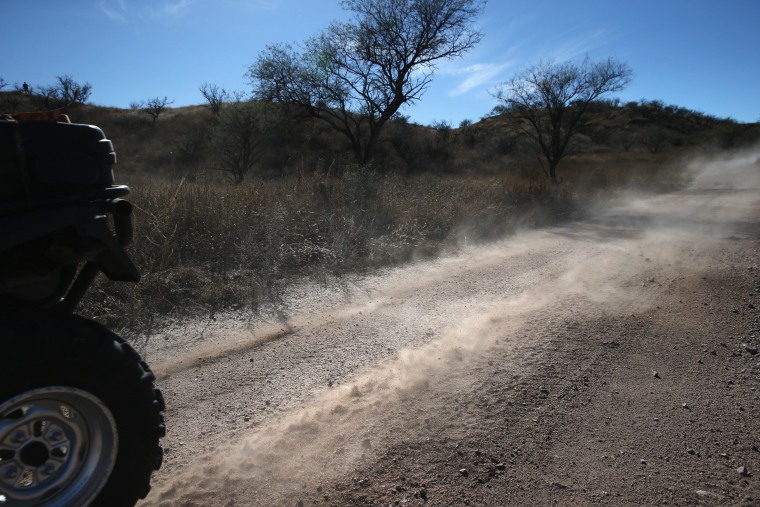“Hello I am sorry to bother you but I need your assistance,” begins John Vaillant’s novel, “The Jaguar’s Children.” The voice asking for help belongs to Hector, one of a group of fifteen undocumented immigrants trapped inside the sealed tank of a water truck somewhere near the Arizona/Mexico border.
Abandoned by their traffickers, Hector and his fellow captives fight off claustrophobia, hunger, thirst, heat, and cold as they pray for a rescue that may never come. Only Hector has a lifeline to the outside world, a dying cell phone which he uses to send a series of text and voice messages to a random phone contact – not knowing whether the messages will ever be heard.
Vaillant, 52, tells Hector’s story through these texts and voice recordings, touching on everything from migration to mortality to Zapotec culture. It is a debut novel by Vaillant, the author of two award-winning nonfiction books, “The Golden Spruce” (2005) and “The Tiger"(2010). He has also written for The New Yorker, National Geographic, Outside, and The Atlantic.
“The Jaguar’s Children” has won early praise from reviewers. Kirkus Review termed it “an eloquent literary dissection of the divide between the United States and Mexico,” while Publishers Weekly noted that, “the importance of its themes, which closely mirror life, cannot be doubted.”
“The Jaguar’s Children” will be released in bookstores and on Amazon on January 27, and Vaillant kicks off a national book tour on January 28th. He recently spoke with NBC News on the experiences and inspiration behind his story of the harrowing conditions around an immigrant's journey to the U.S.

NBC: Do you have any personal connection to Mexico?
JV: Three generations of my family have roots in Mexico. My great-grandfather left Indiana for Guatemala in 1885, and later found his way to Mexico City. My grandmother grew up bilingual in Mexico; my grandfather was an archaeologist who wrote one of the definitive histories of the Aztec people. My father’s first language was Spanish. I grew up in New England, and my grandmother’s house, my aunt’s and uncle’s homes, were all filled with Mexican things. When I got to Oaxaca in 2009, it was my first time in Mexico. Yet seeing the faces in the zócalo (public square), it all seemed so familiar to me. I had been seeing these textures, these eyes, these faces all my life.
NBC: Why does the imagery of the jaguar figure so importantly in this book?
JV: I live in the Pacific Northwest, in British Columbia, where there are many indigenous groups. We see totem poles with figures of the great killer whale, bears. They are everywhere, and not just as tourist attractions, they represent something real, our totemic ancestors. In Mexico, and especially for the Zapotec people, the jaguar is seen in a similar light. People are not praying to the jaguar or making offerings, yet it is definitely a presence in the collective consciousness. The jaguar as a concept and its imagery in real life are just part of the environment.
"The psychic price people pay just to get here to have the chance to work is enormous. I hope people will think about what they would do in the same situation."
I was struck one day that the word “jaguar” contains the word for water in Spanish, agua. As a writer, somebody interested in words and symbolism, this fascinated me. And all around Oaxaca, you see these waters trucks that say agua para uso humano (“water for human use”). I got to thinking that these trucks could hold people, and the elements of my story started to boil and come together, like a soup.
NBC: Your non-fiction books were well received, what drew you to fiction?
JV: I think most non-fiction writers have a dream of wring a novel someday. But it was the year that we spent in Oaxaca in 2009-2010 that inspired the novel. I saw that there were a lot of villages that were half-empty because people had gone to the States to work. The fabric of society was really torn and frayed. And the more I saw, the more curious I became. Originally, my hopes for Mexico were a hammock and reading books without tigers in them.
Then one day this voice just sort of came to me, it became the first sentence of the book. I had the idea that there is this guy trapped in a truck on the border, and I followed the thread. It was strange and a little mythic; I normally don’t take dictation out of thin air (laughs). But pretty much everything in the book relates to things I saw or heard about directly. A novel turned out to be the best container for everything I saw and heard and felt.
NBC: What do you hope that readers take away from “The Jaguar’s Children?”
JV: I hope that the next time they see Mexican immigrants at the 7-Eleven, standing at the bus stop, or behind a counter, they will wonder what they've been through to get to that place. What is their journey? What is their story? I’ll bet it’s pretty interesting and possibly terrifying. The psychic price people pay just to get here to have the chance to work is enormous. I hope people will think about what they would do in the same situation, with their family, with their kids. It’s hard to leave your home. The sense of alienation and confusion is a very real thing for immigrants, and there are millions of people going through it in the U.S. and Canada every day.
